Ever wondered about Batanes’ region? Is it unique or part of something bigger? This article will explore Batanes, located in the Philippines. We will uncover its geography, history, and the best tourist spots. You’ll be surprised by its stunning beauty and deep culture.
Key Takeaways
- Batanes is an archipelagic province in the Cagayan Valley region of the Philippines.
- It sits at the country’s northern tip, famous for its breathtaking landscapes and culture.
- This province is made up of islands like Batan, Sabtang, and Itbayat.
- Discover Batanes’ beautiful scenery, stone houses, and unique traditions.
- Find out the best time to go, how to get there, and what to do in Batanes.
The Geography of Batanes
Batanes sits in the northernmost part of the Philippines, nestled between the Balintang Channel and Taiwan. It’s about 162 kilometers north of Luzon and roughly 190 kilometers from Taiwan. This area is a part of the Luzon Volcanic Arc, featuring several islands in an archipelago.
Batan, Sabtang, and Itbayat are the three main islands where people live. Batan holds the capital, Basco, and is the largest. Sabtang and Itbayat promise unique landscapes and cultural experiences. The beauty of Batanes is in its coastlines, hills, and cliffs. It’s a haven for those who love nature and adventure.
The untouched beauty of Batanes shines through its natural and breathtaking views. Each island, from Batan to Itbayat, offers something special. In Batanes, the beauty of nature and the richness of culture come together beautifully.
History of Batanes
The province of Batanes has a captivating history that goes back centuries. It was influenced by various colonial powers and major events. From the ancient Austronesian settlers to the independence movements, Batanes experienced different historical phases.
Ancient Origins
The Ivatan people were the first to live in Batanes. They date back 4,000 years to Austronesian settlers. These early people formed communities and did well in the archipelago’s tough landscape. They were both resourceful and resilient.
Spanish Colonial Era
In 1783, Spain took over Batanes, adding it to their colonies. Under Spanish rule, it joined the Philippines as a province. This era’s influence is still seen in Batanes’ architecture and customs today.
American Colonial Era
After the Spanish-American War in 1898, the U.S. took control of Batanes. This brought big changes, with the U.S. introducing new systems and improving infrastructure.
Japanese Occupation during World War II
World War II saw Batanes under Japanese control. The Japanese had a strong presence, affecting the Ivatan people’s lives. Those years were tough, with the locals facing the challenges of war.
Philippine Independence
The Philippines claimed its independence on July 4, 1946. Batanes, like the rest of the country, became free. It marked a new chapter of freedom and self-leadership for them.
“Batanes has a rich and diverse history, blending indigenous culture with the legacies of colonial rule. Each era has shaped the identity of the province, making it a unique and storied destination.”
Today, Batanes is a calm province at the Philippines’ northern tip. Its history shows the strength and spirit of its people. A visit to Batanes offers insight into its rich historical backdrop.
Best Time to Visit Batanes
The ideal time to visit Batanes is from March to June. These months are dry with a lot of sunshine. Visitors can enjoy outdoor fun and see stunning views.
Batanes has a tropical climate, averaging 26.0 °C yearly. In the dry season, temperatures range from 28 to 32 °C. This makes it great for exploring and enjoying the beaches.
The wet season runs from July to December. August sees the most rain. Rain can change plans and reduce outdoor fun. So, try not to visit during these wet months.
Visit during the dry season for unforgettable times. Batanes offers beautiful coasts, green hills, and rich culture during these months.
| Season | Months | Temperature Range (°C) |
|---|---|---|
| Dry and Summer Season | March to June | 28 to 32 °C |
| Rainy Season | July to December | Varies, heavy rainfall in August |
How to Get to Batanes
Reaching the distant Batanes is an exciting journey. The easiest way to get there is by flying from Manila to Basco, Batanes’ capital. Flights are offered by Philippine Airlines, Cebu Pacific, and Skyjet, taking about 2 hours.
In Batanes, getting around is simple. Here’s what you can use:
Tricycles:
Known as “padyak,” tricycles are a common and affordable way to move around. They let you see the beautiful streets and go wherever you want.
Private Vans or Cars:
For comfort and ease, consider renting a van or car. It’s perfect for groups or those wanting a tailored trip.
Jeepneys:
Riding a vibrant jeepney gives you a taste of Filipino culture. It’s a great way to meet locals and see Batanes.
Bicycles:
For the adventurous, bicycles are available. They offer a peaceful way to see Batanes’ stunning views at your pace.
Boats:
Boats are used for visiting Batanes’ other islands like Sabtang and Itbayat. They reveal the islands’ beauty and uniqueness.
Each transport option offers a special way to experience Batanes. Choose what suits you and enjoy exploring this magical place.
| Transportation Options | Advantages |
|---|---|
| Tricycles | Economical and easy to find |
| Private Vans or Cars | Comfortable and convenient for larger groups |
| Jeepneys | Offers a cultural experience and interaction with locals |
| Bicycles | Provides a leisurely and independent exploration of Batanes |
| Boats | Allows for inter-island travel and discovering neighboring islands |
Where to Stay in Batanes
Looking for a place to stay in Batanes? You have many options to fit your style and budget. Whether it’s a luxury hotel, a cozy guesthouse, or a homestay, Batanes offers it all.
Hotels
Hotels are great for those who love comfort. In Basco, the heart of Batanes, there are hotels for all budgets. You can choose from boutique hotels with beautiful sea views or go for a well-known hotel chain.
Lodges and Guesthouses
Lodges and guesthouses give a friendly, homey feel. They’re often run by locals who love to share their culture. You can find them throughout Batanes, each offering a unique and personal touch.
Homestays
A homestay is perfect for diving into the local culture. You live with Ivatan families in their homes. It’s a great way to learn about their life, customs, and enjoy Ivatan food.
Remember, booking a place online in Batanes can be a challenge. It’s best to book early to get your preferred spot.
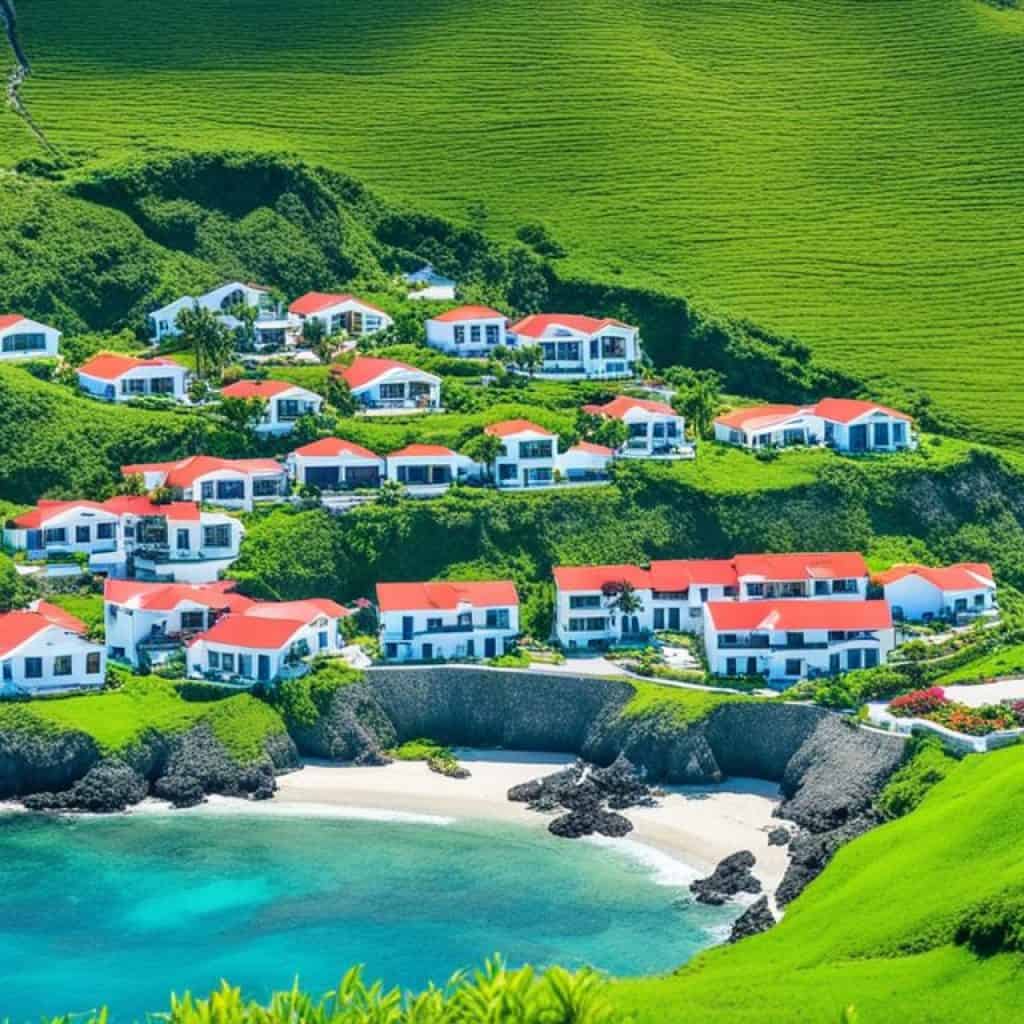
“A homestay in Batanes is unforgettable. The hosts make you feel right at home. You become part of their family and learn about Ivatan culture. For a real Batanes experience, I suggest staying in a homestay.”
Popular Tourist Spots in Batanes
Batanes is known for its beautiful nature and rich culture. It has many tourist spots that show the beauty of this province. You can find amazing views, historical places, and outdoor adventures in Batanes.
Batan Island
Batan Island is a place you must visit in Batanes. It has natural wonders and cultural sites. The Basco Lighthouse offers amazing views of the sea and hills. Valugan Boulder Beach has huge boulders along its coast.
Vayang Rolling Hills will charm you with its beautiful views.
Sabtang Island
Sabtang Island feels like stepping back in time. Here, you can see traditional stone houses in Chavayan village. They show the Ivatan people’s unique culture. The island’s beaches like Morong Beach give you a peaceful place to relax.
Itbayat Island
Itbayat Island lets you see Batanes’ geological wonders. The Torongan Cave is an amazing underground place. It shows the unique rock formations of the island. The Rapang Cliffs offer impressive views of the ocean against the coast.
Itbayat is great for those who love nature and adventure.
“Batanes is full of natural and cultural wonders. Each island has its own special attractions. Batan Island has beautiful landscapes. Sabtang Island has preserved heritage. Itbayat Island has geological marvels. It’s an adventure you won’t forget.” -Kristine, avid traveler
Batanes also offers hiking, diving, and learning about Ivatan culture. You can admire the traditional stone houses or enjoy the stunning views. Being with the locals lets you experience their rich culture and hospitality. A trip to Batanes is truly special.
Top Tourist Spots in Batanes
| Island | Tourist Spots |
|---|---|
| Batan Island | Basco Lighthouse, Valugan Boulder Beach, Vayang Rolling Hills |
| Sabtang Island | Chavayan Stone Houses, Morong Beach |
| Itbayat Island | Torongan Cave, Rapang Cliffs |
Cuisine in Batanes
Batanes offers a unique culinary experience. Its traditional Ivatan dishes highlight the province’s location. They make use of fresh ingredients from the surrounding waters and fertile land. Enjoy the local flavors and the ingredient freshness.
Delicious Seafood Delicacies
Experience Batanes’ seafood delicacies. The flavorful coconut crab, tender flying fish, and succulent lobster await seafood lovers. You’ll be delighted by the variety.
A Fusion of Roots, Vegetables, and Herbs
Ivatan cuisine uses root crops, vegetables, and local herbs. Enjoy dishes with unique flavors from taro, yam, sweet potato, and malunggay.
“Batanes cuisine offers a delightful blend of fresh seafood and locally sourced ingredients, resulting in a truly memorable gastronomic experience.” – Local Food Enthusiast
Sample the Local Dishes
Here are some traditional dishes in Batanes you must try:
- Mahpaw – A savory soup with seafood and various root crops.
- Pakbet – A flavorful vegetable dish using local produce.
- Dibang – Deep-fried flying fish, a delicacy in Batanes.
- Uved – A unique dessert from arrowroot starch.
Immerse yourself in the culture. Savor these traditional dishes to experience Batanes’ true essence.
Practical Information and Tips for Visiting Batanes
Before heading to Batanes, get ready with some useful tips. These will ensure your trip is both fun and hassle-free.
Currency in Batanes
The Philippine Peso (PHP) is the currency in Batanes. Bringing enough cash is wise as ATMs are scarce. Since credit cards are not always accepted, having cash is crucial for your expenses.
Language in Batanes
In Batanes, people speak Ivatan, Itbayaten, Isamurongen, Ilocano, Tagalog, and English. Most understand English. But learning some local Ivatan or Itbayaten phrases shows respect for their culture.
What to Pack for Batanes
Here’s what you should pack for Batanes:
- Bring comfortable clothes for the warm weather and outdoor fun.
- Don’t forget sun hats, sunglasses, and sunscreen to protect from the sun.
- Have a rain poncho or jacket ready, especially during the rainy season.
- Wear sturdy shoes for hiking around the beautiful landscapes.
- Carry a reusable bottle to keep yourself hydrated.
Respecting Batanes culture is vital. Dress modestly in churches and understand their customs. This shows you care about their traditions.
“By being well-prepared and respectful of the local customs, you can have an enriching and memorable experience in beautiful Batanes.”
| Practical Information and Tips for Visiting Batanes | |
|---|---|
| Currency in Batanes | Philippine Peso (PHP) |
| Language in Batanes | Ivatan, Itbayaten, Isamurongen, Ilocano, Tagalog, and English |
| What to Pack for Batanes | Comfortable clothing, sun protection, rain gear, sturdy footwear, reusable water bottle |
Sample Batanes Itinerary
Planning a trip to Batanes? Here’s a 5-day itinerary for a full experience. It lets you explore the stunning sights of this beautiful region.
Day 1: Arrival in Batanes
- Arrive at Basco Airport
- Check-in at your chosen accommodation
- Explore Basco Town
- Visit Basco Lighthouse for panoramic views
- Enjoy a delicious seafood dinner
Day 2: Batan Island Exploration
- Start your day with a hearty breakfast
- Head to Valugan Boulder Beach
- Visit the Dipnaysupuan Japanese Tunnel
- Discover the historic San Carlos Borromeo Church
- Enjoy a picnic lunch at Vayang Rolling Hills
- Take a refreshing dip at Homoron Blue Lagoon
- End the day with a sunset walk along Naidi Hills
Day 3: Sabtang Island Adventure
- Take an early morning boat to Sabtang Island
- Explore the charming village of Chavayan
- Visit Sabtang Lighthouse for stunning views
- Indulge in a traditional Ivatan lunch
- Relax and unwind at Morong Beach
- Immerse yourself in the local culture and visit the Sabtang Weavers Association
Day 4: Itbayat Island Discovery
- Embark on a boat journey to Itbayat Island
- Explore the unique geological formations at Torongan Cave
- Hike to the picturesque Rapang Cliffs
- Join a guided tour to learn about the local customs and traditions
- Enjoy a picnic lunch with breathtaking views
- Return to Batan Island in the evening
Day 5: Cultural Immersion and Farewell
- Visit the Batanes Cultural Center to learn about Ivatan culture
- Explore the Honesty Coffee Shop, a unique concept in Tukon
- Shop for local handicrafts and souvenirs
- Enjoy a farewell lunch with traditional Ivatan dishes
- Take one last stroll along the picturesque Basco Bay
- Depart from Basco Airport feeling rejuvenated and enriched by your Batanes adventure
Feel free to change this itinerary to suit your taste. Remember to update yourself and book in advance for a smooth trip.
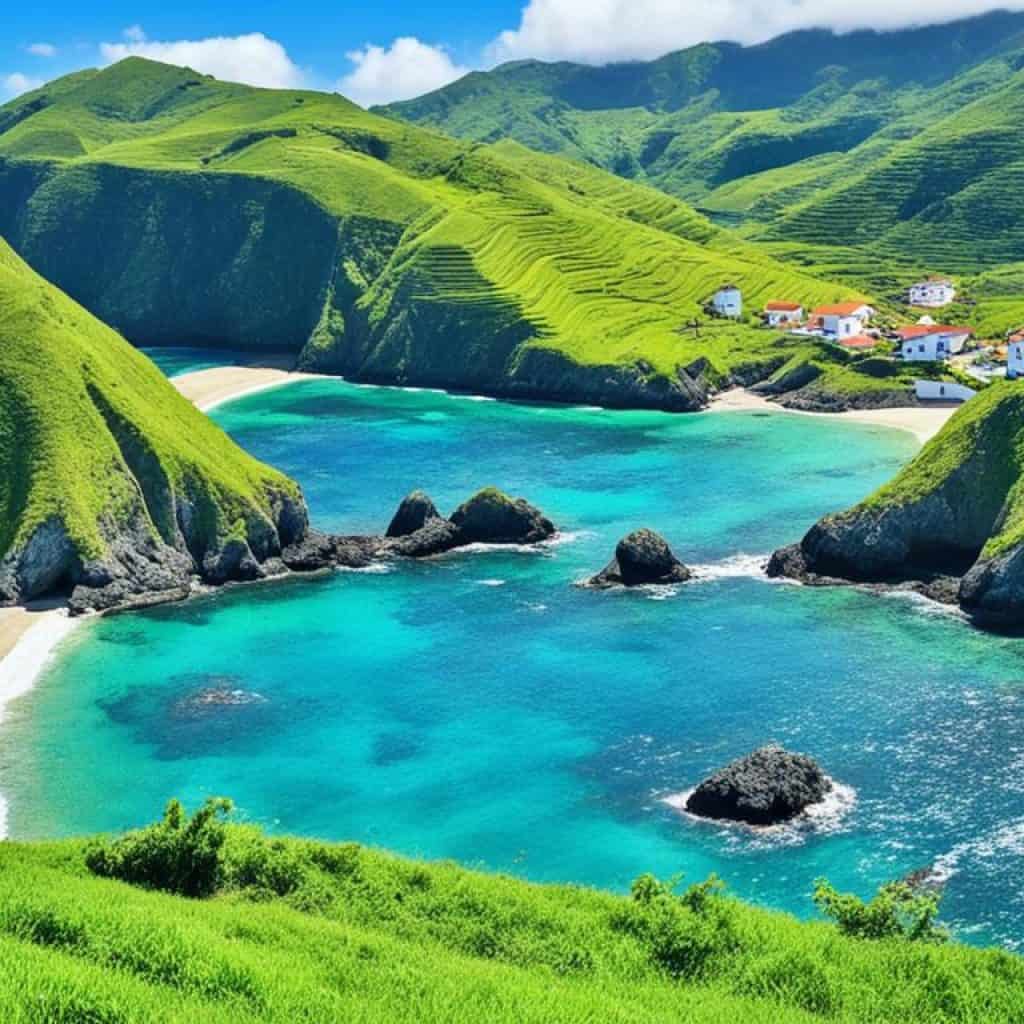
Transportation in Batanes
Getting around Batanes is straightforward and fun. There are many transportation options to explore the towns or nearby attractions. These options make it easy to see the wonders of Batanes.
Tricycles in Batanes
Tricycles, or “padyak,” are a common choice in Batanes. They are motorized and have three wheels. Tricycles are perfect for short trips.
They are great for solo travelers or small groups. You can enjoy the scenery and feel the local culture.
Private Vans in Batanes
Renting a private van is a comfy and easy option. It is ideal for bigger groups or families. Vans have lots of space for people and luggage.
You can book a van ahead of time through local agencies. Planning your trips becomes a breeze.
Bicycles for Leisurely Exploration
Bicycles are perfect for a slow exploration of Batanes. They are green and let you see the sights at your pace. Bikes are loved by those who enjoy nature and being outdoors.
They offer a special way to see Batanes. You can take in the beautiful views while exercising.
“Discover the stunning landscapes of Batanes at your own pace with tricycles, private vans, or bicycles. Whether you prefer a leisurely ride, convenient transport, or an immersive experience, there’s a transportation option in Batanes that suits your needs.”
There are many transportation choices in Batanes. You can use a tricycle, rent a van, or bike around. Exploring Batanes is as thrilling as the place itself.
With so many ways to get around, you will not miss out on any sights. Batanes is ready to be discovered.
Unique Cultural Features of Batanes
Batanes is the northernmost province in the Philippines. It’s known for beautiful landscapes and unique cultural heritage. The Ivatan people live here, keeping their culture alive for generations. The Ivatan language is a big part of their rich heritage.
Traditional stone houses, called “Maytuab,” are common here. They have thick walls and thatched roofs to stand up to strong winds and typhoons. These houses show the Ivatans’ skill in adapting to their harsh environment. They are also proof of the Ivatan people’s creativity.
Another cultural highlight is the honesty stores. These shops work on trust. Customers pay by leaving money in a box or piggy bank. This practice shows the Ivatans’ honesty and the tight-knit community in Batanes. Honesty stores reflect trust and integrity in the local culture.
In conclusion, Batanes is more than just its natural beauty. It also has a rich cultural heritage. The stone houses and honesty stores give us a peek into Ivatan culture. Visiting Batanes offers a chance to dive into its history and traditions. It makes for an unforgettable experience.
Conservation and Preservation Efforts in Batanes
Batanes is committed to saving its rich natural and cultural roots. It aims to shield the distinct ecosystems and biodiversity in the region. As part of this mission, the Batanes Protected Landscape and Seascape (BPLS) covers the province.
The BPLS aims for UNESCO World Heritage Site status. This shows Batanes’ global value, deserving protection and celebration. The BPLS also promotes tourism that does not harm nature. It lets people see Batanes’ wonders while keeping the environment safe.
The BPLS educates visitors on why we must keep Batanes’ beauty and culture. Through various efforts, it spreads the word on caring for our planet. Batanes hopes to create a community that helps protect its land, plants, and animals for the future.
“Preserving the natural beauty and cultural heritage of Batanes is not just a responsibility, but a gift to future generations. Through our conservation efforts, we hope to inspire others to value and protect this precious corner of the Earth.”
Batanes leads by example in conservation. It mixes research, monitoring, and eco-friendly actions to protect nature. This shows Batanes’ strong promise to keep its treasures safe.
Key Initiatives of the Batanes Protected Landscape and Seascape:
- Setting up protected zones for wildlife and ocean life
- Encouraging eco-friendly travel
- Teaching people about caring for the environment
- Working with locals and groups to save nature
- Studying the land and sea to understand their health
With these steps, Batanes works toward a future where growth and nature live in harmony. Tourists play a part in this by visiting. They help preserve this special place and back the ongoing efforts to save it.
| Conservation Efforts in Batanes | Preservation Efforts in Batanes | Batanes Protected Landscape and Seascape |
|---|---|---|
| Setting up protected areas | Eco-friendly travel | Keeping wildlife and oceans safe |
| Teaching about environmental care | Working with communities | Finding a middle ground between growth and nature |
| Researching the environment | Future-proofing nature | Backing efforts to save our planet |
Conclusion
Batanes is a hidden gem in the Philippines. It has stunning views, a deep culture, and a peaceful vibe. The area’s commitment to conservation adds to its charm, making it perfect for nature and culture lovers.
Visiting Batanes lets you dive into the beauty of this isolated place. You’ll see natural wonders and feel the warmth of the locals. It’s a break from the busy world, where you can enjoy scenic coasts and learn about the Ivatan culture.
Explore the breathtaking landscapes and rich culture of Batanes. It’s a journey you won’t forget. Let the beauty of this unique paradise touch your heart.
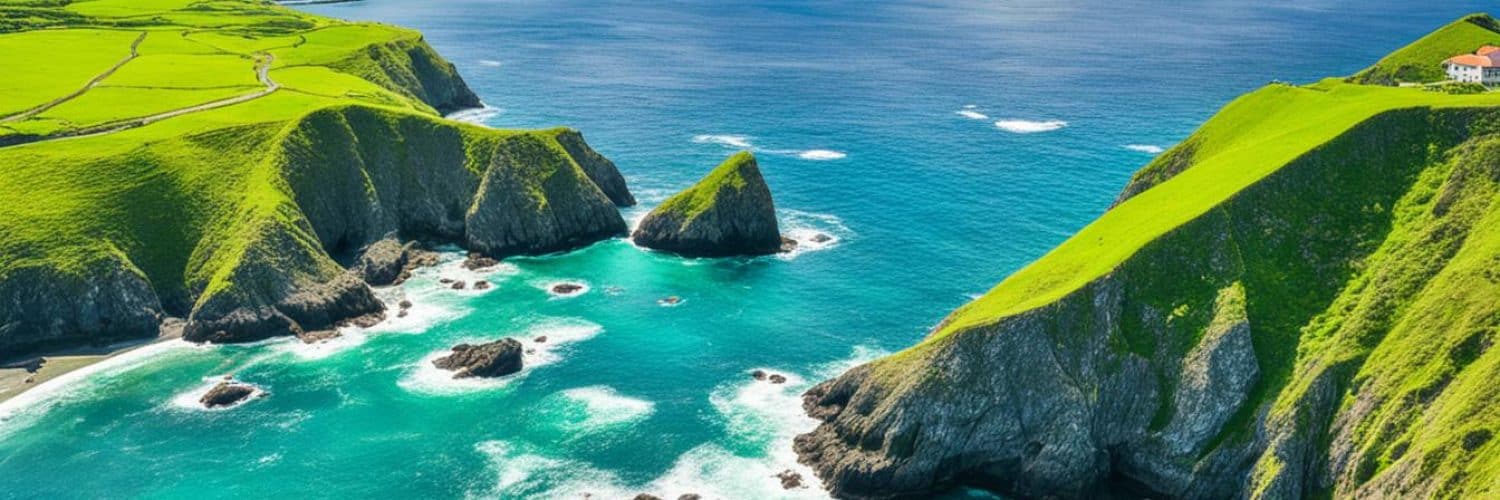
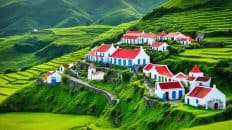
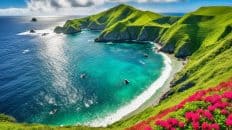
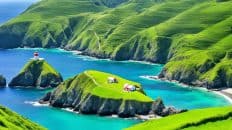














Add comment